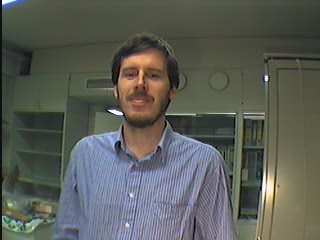
TKK | Tietoverkkolaboratorio | Tutkimus

Researcher (part time): Responsible for the professorship of "Broadband integrated services networks and their traffic theory". 1995 - 96
As a special lecturer:
Master's thesis
Research projects at HUT:
Research projects at Telecom Finland:
Nokia Research Center, 1995 -
The way of outlining the problem area and the method of analysis depend strongly on the society. For most users the traffic management is only a tool which makes possible to create telecommunication services which meet the user needs. The following grouping is practical when assessing the services on the user point of view:
These services and applications, and possibly some others which are still out of our range of vision, form a diverse set of requirements for any broadband network. To satisfy these requirements several network services have been introduced. A reasonable selection and an adequate definition of these services are of great importance for the operators of broadband networks. Although the standardization of the services, such as constant bit rate (CBR), variable bit rate (VBR), available bit rate (ABR) and unspecified bit rate (UBR), is in progress, there still are many open issues which need both theoretical research work and practical assessment of different aspects.
Because of the diversity of services the control and management systems of broadband networks tend to become very complicated. Therefore, in order to make the standardization and implementation of the services feasible control system should be build of relatively independent elements or functions. A typical list of issues connected with the traffic management is as follows:
This type of viewpoint is essential for every manufacturer developing switching nodes and other components for broadband networks.
Unfortunately, it is not sufficient to comprehend and define different services and functions separately, in addition we should profoundly understand the interdependencies between different aspects. For example, the ABR service is a complicated method by which the operator can offer an advanced service which meets user requirements in case of data transport. All the aspects, related to users, operators and manufacturers, should be covered in the developing processes of the services, the switching nodes and the management systems. The challenge is how we can integrate all the solutions for different problems in a way that a feasible and robust total management system can be constructed.
On the one hand, the research work of the professorship should support practical development efforts both on the manufacturer and the network operator side. To attain this objective we need a comprehensive view into the problem area, as presented in the technical discussion above, and close cooperation with other organizations in the telecommunication area.
On the other hand, the research work should also be a creative process. We get the best opportunity to invent new ideas by connecting knowledge from separate domains. For example, neural networks and genetic algorithms have proved to be useful approaches in many technical problems; they may even form the basis of the whole traffic management system of ATM networks.
Another method to stimulate the innovation process is to put the goal far enough in the future. This process calls for extensive surveying of the research problems so that the amount of preliminary ideas is sufficient for a thorough selection. One example of an interesting problem area is full-optical telecommunication networks based on wavelength multiplexing and the dimensioning and traffic control of these networks. The combination of broadband and radio technologies may also generate a lot of new questions for traffic theory.
The area of professorship gives a chance of taking any of the above approaches. Actually, we must choose our objectives in a way that the human and financial resources will be utilized as efficiently as possible. At the end of the last year Telecommunication laboratory got funding for two new research projects connected with the professorship: MITTA (funded by Suomen Akatemia) and FASTER (Tekes). The focuses in these projects are in items 2 and 3. In addition, it could be possible to use the general resources to develop simulation and analyzing tools (item 4). In consequence, these three items will likely be the primary scopes of research activities in the beginning of the professorship. However, this assumption does not restrict the application of the items 1, 5 and 6 later.
Abstracts of following papers are stored with other papers from this project.
Full papers are either in PostScript or PDF form.
Tietoverkkolaboratorio on nyt osa Tietoliikenne- ja tietoverkkotekniikan laitosta. Tällä sivulla oleva tieto voi olla vanhentunutta.
|
Tämän sivun sisällöstä vastaavat ja
Webmaster.
Sivua on viimeksi päivitetty 03.09.1997 17:00. URI: http://www.netlab.tkk.fi/tutkimus/mitta/kalevi.shtml [ TKK > Sähkö- ja tietoliikennetekniikan osasto > Tietoverkkolaboratorio > Tutkimus ] |